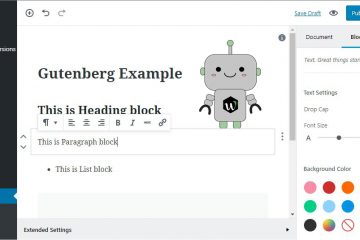Ranking on search queries is the lock and SEO is the key. There are multiple ways you can rank your website on search results but the best way is through Google. Google and other search engines are the answer to many of your SEO woes. When you gain authority from these titans of the digital world then you can become the dominant force in your industry.
Many people wonder how to start ranking as a local business. There are a million and one strategies that tell you how to rank on search engines like Google, Bing, and Yahoo!
So how do you separate fact from fiction? They can’t all be right after all so who’s the authority to turn to?
The simple answer is with the search engines themselves. Companies like Google have already released documentation on their search algorithms that can be used for SEO strategies. However, it’s vital to start with simple methods that have been used and proven to work.
That being said, if you could only follow three strategies for SEO then you should go with Google verification, keyword optimization, and using niche specific categories via long-tail keywords.
Local SEO Tips
Starting with the first term, you need to seek verification with popular search engines like Google. You can verify your company as a business. These listings have the power to display your phone number, location, business name, and hours of operation for free.
When people search for your industry your company information will appear in the search results, if you’re one of the closest options to the person searching.
When Google verifies your site, you can enter your geographical information and avoid having multiple addresses and phone numbers appear when people search for you (an SEO no-no). On the other side, if you have multiple businesses throughout the nation, showing the proper store information to the closest searcher would improve your relevancy by showing accurate, up-to-date information.
Keyword optimization is another element that serves as one of the most important for SEO. Understanding what key terms are specific enough to help you rank for your niche but general enough for people to find you is the key to unlocking your SEO potential as a local business.
You also need to follow the codes of conduct for Meta descriptions, keywords, and H tags. Everything should flow around the core topic of your content.
If your page is about reviewing the latest iPad then you need to fill that page with synonyms and related keywords, such as “tablet,” “Drawing pad,” “Apple,” “Tim Cook,” the model of the iPad, etc.
Using this in coordination with other keywords and organizing them with H tag headers will help people and Google’s crawlers navigate the page to find what they need (Note that Apple product reviews would be a difficult one to rank for due to sheer popularity).
That last point brings us to the final focus for primary SEO strategies, which involves using long tail keywords to help you rank more effectively than your competition. A study found that 56% of buyers search using 3 or more words and 20-25% of Google’s search queries are unique. Google estimates that long tail SEO accounts for 50% of their advertiser’s revenue.
Sticking with the Apple iPad example, you can use niche-specific keywords to help you rank. If your title is “New iPad Review” you’re going to face a lot of competition and lose rank because there are many other Apple review sites that’ve been around longer, giving them authority over your site.
One way to fix this is by using long tail keywords. Instead of “Apple iPad review,” you might use “Review of New Apple iPad Pro 12.7 inch and Pencil for Drawing.” This connects you with people looking into iPads specifically for drawing. You’ll have better success by targeting this niche audience because you’ll have less competition.
All these local SEO tips make your page cohesive and easy for search engines to find. Connecting the audience with what they’re looking for is a search engines job and when you have a system for your content, using the above strategies; you can start building an SEO foundation for your website.


